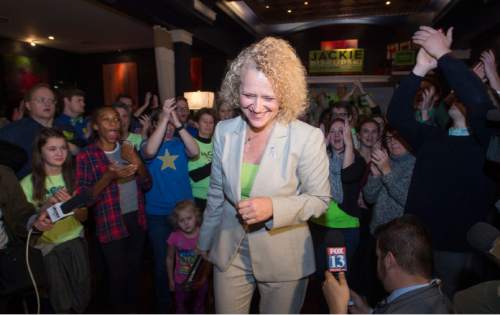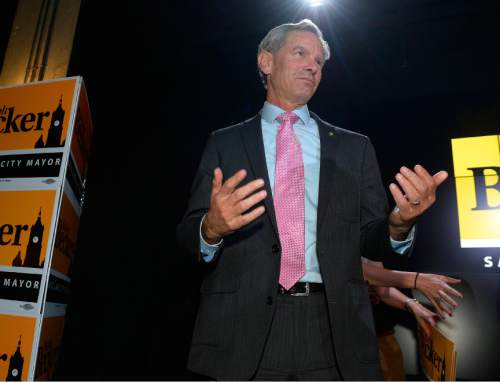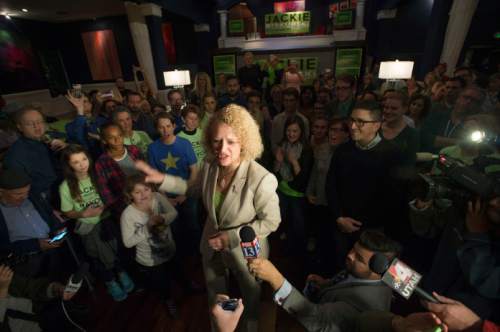This is an archived article that was published on sltrib.com in 2015, and information in the article may be outdated. It is provided only for personal research purposes and may not be reprinted.
Does Salt Lake City Mayor Ralph Becker still have a chance or has Jackie Biskupski locked up the win?
Has Salt Lake County rejected the Proposition 1 transportation tax?
Find out ... in two weeks.
State law requires county clerks to stay mum about vote tallies after Election Day until the official canvass, which will take place Nov. 17.
That is a law Lt. Gov. Spencer Cox wants to see fixed. His staff is working with state Rep. Steve Eliason, R-Sandy, on legislation that would allow more election updates, allowing voters to more quickly get answers to these prolonged cliffhangers.
"Providing more frequent updates to vote counts is simply the logical thing to do. Candidates and voters alike need closure," Cox said. "The information is readily available and easily distributable in the digital age. Everyone benefits by ending elections as soon as possible."
The parties are debating the frequency of those updates. Eliason has not responded to a request for comment.
Don't expect to hear much from Biskupski — or anything. The former legislator, who appears poised to become Salt Lake City's next mayor, released a statement saying, "I will not be commenting further on the election until we get the final results."
That followed Becker's statement that he still holds out hope and won't concede until the official canvass.
Biskupski captured 52 percent of the votes counted by 10 p.m. Tuesday to Becker's 48 percent, and she holds a 1,450-vote lead.
Mark Thomas, the state's elections chief who works for Cox, said the mayoral election is a good example of why more frequent updates would have value.
"It is a close race," he said, "but it is not hairsplitting close."
The two-week canvass period allows county clerks to verify the results while counting provisional ballots and mail-in ballots that are delivered after Election Day (as long as they are properly postmarked by the day preceding Election Day). In elections with razor-thin margins, candidates will have to wait for that final tally.
That's what happened in 2014, when three Democrats lost close state House races they thought they had won on election night.
But with mail-in voting, a larger percentage of ballots are being tallied after the election ends, exacerbating frustration and uncertainty.
Salt Lake City's mayoral contest could tighten when the thousands of outstanding ballots are counted over the next few days, or the results could stay relatively static, but longtime Salt Lake County Clerk Sherrie Swensen cannot share the information with the public until Nov. 17. She can disclose the number of uncounted ballots. There are 23,855 countywide ballots that her team needs to review. It is not clear how many of those are from Salt Lake City..
Swensen said "an interim report may make sense," suggesting just one, a week after the election.
Prop 1 is a tighter contest, with 50.9 percent voting against the sales-tax bump to support transportation projects and 49.1 percent voting in favor of it.
There is a handful of city council races, in places such as Salt Lake City and West Jordan, where candidates are separated by just a few percentage points.
Christopher Smart contributed to this report









